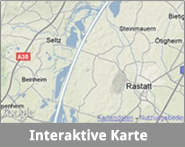Natura 2000
Natura 2000 represents a milestone for nature conservation in Europe. It is one of the largest ecological networks of the world, consisting more than 26,000 protection areas distributed over the whole European Union (cf. Newsletter on Nature and Biodiversity of the European Commission).
Natura 2000 bases on two directives aimed at preserving the biological diversity in the member states.
- On the one hand this is the Habitats Directive (Council Directive 92/43/EWG on the conservation of natural habitats and of wild fauna and flora). The Annexes I and II to this directive contain types of habitats and species whose conservation requires the designation of special areas of conservation (SACs). In these SACs the member states must take all necessary measures to guarantee the conservation of the habitats and species of European importance and to avoid their deterioration and the significant disturbance of species. The Directive provides for co-financing of conservation measures by the Community. Therefore the funding instrument LIFE has been established.
- A further directive, the Wild Birds Directive, specially refers to the protection of birds and their habitats. Again the member states shall create special protection areas (SPAs) for threatened birds and for migratory birds. These areas are to be situated in the birds’ natural areas of distribution and may include wintering and nesting grounds or staging posts along migration routes.
It is the primary aim of these directives to protect and re-establish habitats and communities which are endangered throughout Europe. This means nothing less than creating a base for the preservation of the biological diversity in Europe. Here you can read which areas in Germany and Baden-Württemberg are part of the Natura 2000 network, and what this means and what happens in these areas.
The project „Floodplains of the river Rhine near Rastatt“ contains one SAC (according to the Habitats Directive) and two SPAs (according to the Wild Birds Directive). Its boundaries you find on our online maps:
- “Rhine valley between Wintersdorf and Karlsruhe“ (SAC)
- “Rhine valley between Rench and Murg outlet“ (SPA)
- “Rhine valley Elchesheim Karlsruhe“ (SPA)
Additionally, the project area is situated within the large cross-border Ramsar-Site „Oberrhein - Rhin supérieur“ comprising the Rhine floodplain between Basel and Karlsruhe in Germany and France. The Ramsar convention aims to protect wetlands with world-wide importance, and it is the oldest global nature conservation agreement. It aims to reach a sustainable and balance land-use, aptly escribed in english as “wise use”.



